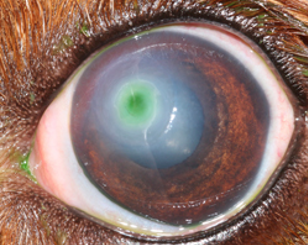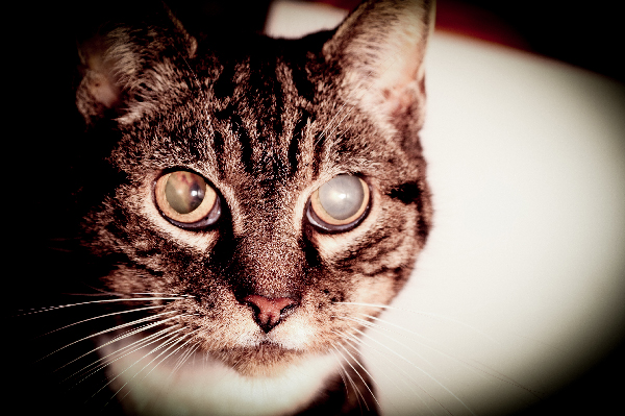Common Eye Problems in Cats and Dogs
Dogs and cats with eye problems are common, so don’t feel unique if you notice something wrong with your pets’ eyes.
This guide is being provided to help you understand the diagnosis or possible diagnosis of an eye problem in your dog or cat. Veterinarians can suggest certain tests to help confirm or eliminate diagnosis, and to help assess treatment options and likely outcomes. Instances can vary depending on the situation, so science can only provide a guide. It’s always best to consult with a vet if you’re concerned your dog or cat may have an eye issue. If you have any questions, please don’t hesitate to ask us.
Conjunctivitis and Keratitis
Conjunctivitis is the inflammation of the pink membranes surrounding the eye and is a common eye problem in dogs and cats. Keratitis is inflammation of the cornea. These two conditions can be caused by viral, bacterial, or allergy-driven infection.
Conjunctivitis in a Cat
Keratitis in a Dog
Corneal Eye Problems
The following are common eye problems that occur on the cornea (outer layer) of the cats eye:
Corneal ulcers: A scratch or abrasion on the cornea of the dog or cat.
Trauma to the Cornea: Injuries to the cornea can be sharp or blunt. Sharp trauma often causes corneal abrasions or lacerations. These are an emergency and require immediate veterinary attention. Blunt trauma can cause inflammation in the front chamber of the eye leading to cloudiness and inflammation.
Ruptured cornea: This is when the cornea is cut and starts to release the inner contents of the eye.
Ruptured Cornea
Corneal Ulcer
Keratoconjunctivitis Sicca (Dry Eye Disease)
Dry eye disease is when the surface of the dog or cat’s eye becomes dry and inflamed. It is characterized by a deficiency of the aqueous film that covers the surface of the eye and the lining of the lids.
Glaucoma in Cats and Dogs
Glaucoma is an eye condition that is caused by an excessive amount of pressure that builds up behind the eye. It’s very painful. It is most common sign is bulging eyes.
Glaucoma
Eyelid Cysts: Meibomian Cysts
Meibomian Cysts, also known as eyelid cysts, are growths on your dog or cats eyelids. It is more common in dogs than cats. They are usually caused by blocked oil glands.
Cancer of the eye: Lymphoma, Melanoma, and Neuroblastoma
Cancer of the eye in dogs and cats occur as tumors on the eye:
• Lymphoma: A type of cancerous tumor that originates in the lymphocyte cells. Lymphocites are an integral part of the body’s immune system.
• Melanoma: Tumors that arise from pigment producing cells and can appear on the eye. They can be benign or malignant.
Anterior Uveitis
Anterior uveitis is directly translated to mean “inflammation of the front of the eye.” Symptoms include eye redness, squinting, excessive blinking, avoidance of lights, unusual color of the iris, cloudy appearance in the eye, and watery, mucus, or pus discharge from the eye.
Herpes Keratitis and Conjunctivitis in Cats
Feline herpes virus is the most common cause of corneal and conjunctival disease in cats. Like all herpes, it remains in the body for the life of the cat. Stress can cause flare-ups and activation of the virus leading to red, swollen eyelids and pinpoint ulcers on the cornea.






